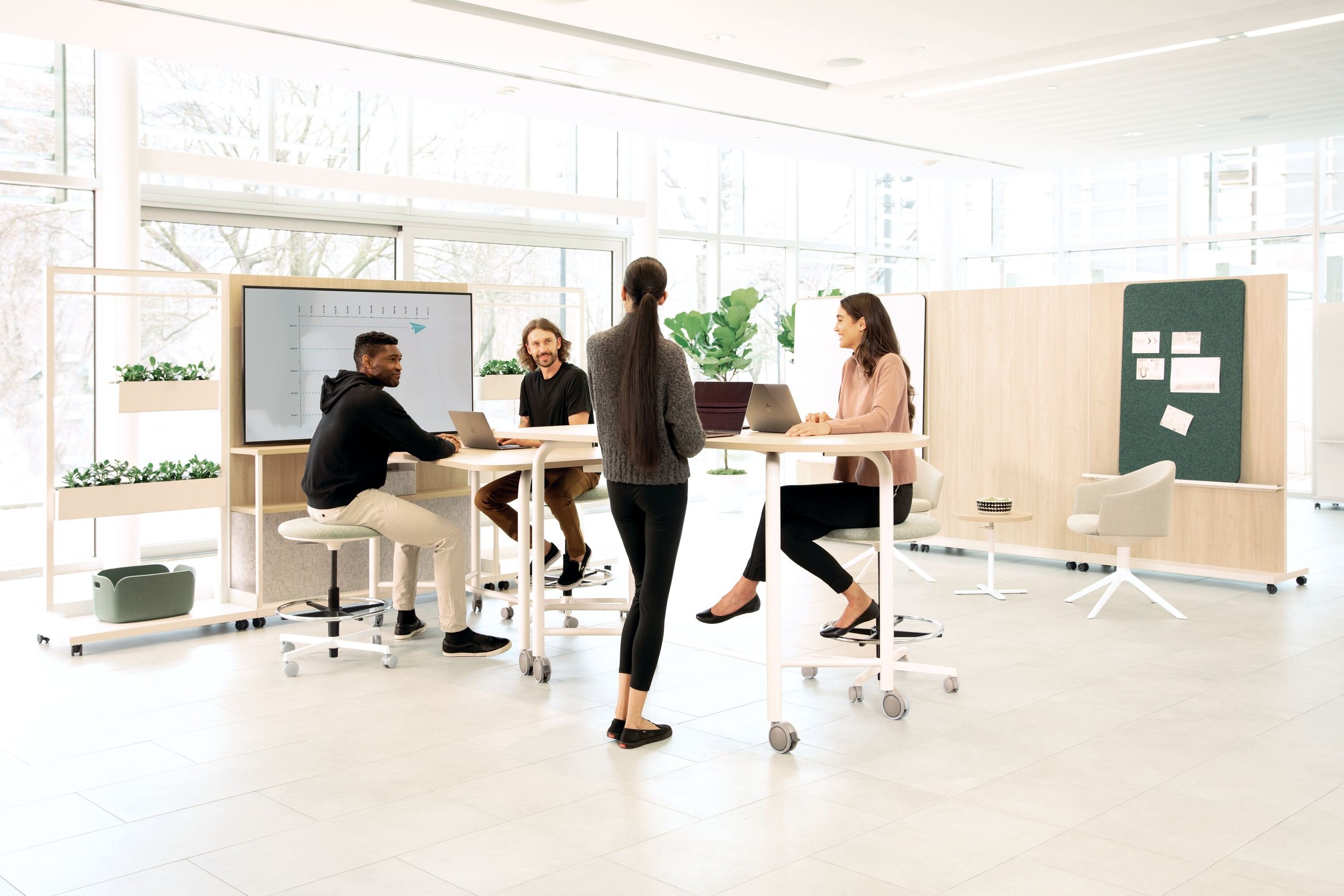A Hybrid Work Schedule Can Improve Office Culture
Just when you thought it was safe to go back to the office… it’s flu season. Or another team member has Covid. Whatever the case may be, returning to the office hasn’t been as seamless as many business owners had hoped.
Even if your team is healthy, many workers got used to a hybrid work schedule over the course of the pandemic, and that doesn’t appear to be changing any time soon. In fact, 62% of U.S. workers ages 22-65 occasionally work from home, and 86% of workers say having the option to work from home would make them happier.
At many companies, it’s now normal for employees to work a 3-2 schedule—three days a week at the office, and two days working from home. Despite what you might think, this hasn’t resulted in lots of emptied-out office buildings. And there are reasons. Hybrid work has given us a chance to rethink office design. And in a tight labor market, many businesses have opted to cut costs not by shedding square footage, but by using less dense, more inviting office space to reduce employee turnover. Read on to learn more about this emerging trend, and strategies you can use to optimize extra space and retain talent in the new age of hybrid work.
Is Hybrid Work Really Here to Stay?
Almost three years on from the onset of Covid-19, it might seem strange that we’re still talking about remote and hybrid work. But according to Allwork.Space’s 2023 Future of Work Forecast, “companies have solidified their hybrid workplace policies and are now looking for ways to redesign their office spaces to support remote and in-person employees.” Take it from sustainable workplace design expert Tim Gawel:
One of the major design elements we’re expecting to be carried into the new year are conference rooms with technological integrations that allow for everyone to have the same on-camera appearance and audio quality. We’ll also see the emerging trend of technology accommodating live working meetings through constant video and audio connectivity as well as the possibility to move about the office while still engaging with virtual employees. Organizations who consider the entire workplace, both virtual and in-person, in their 2023 renovations will have the edge over those who simply update their office furnishings.
Wherever you stand on remote vs. in-person work, forward-looking businesses need to take the realities of hybrid work into account. And for business owners, there are ways you can leverage this culture shift to your advantage.
Improve Your Workspace with Multi-Modal Design
When employees take a 3-2 or other hybrid work schedule, the office will naturally feel emptier. But emptiness can also create opportunity. A full office with tightly packed cubicles and few spaces for gathering and building community isn’t always the most comfortable. With fewer workers in the office on a daily basis, there’s less need for cramped closed offices and cubicles. An office redesign can help you transform these spaces to the benefit of your whole team.
The latest approach to office design emphasizes “multi-modal workspaces,” which “create key experiences in the workplace that augment working at home and open the door for a truly optimized work experience,” according to Forbes. Some key elements of multi-modal design include:
Plants and greenery to create a calm, uplifting environment
Ergonomics like standing desks and monitor arms to protect workers’ physical wellbeing
Acoustics to separate deep-focus spaces from more collaborative areas
Curated design moments that build visual narratives to reflect your brand and company values
Seem like a lot? Don’t worry. OfficeWorks has a team of seasoned workspace design professionals who can help you create the perfect plan for your space. Get in touch today to get started, and make 2023 your best year yet—for your people and your bottom line.

